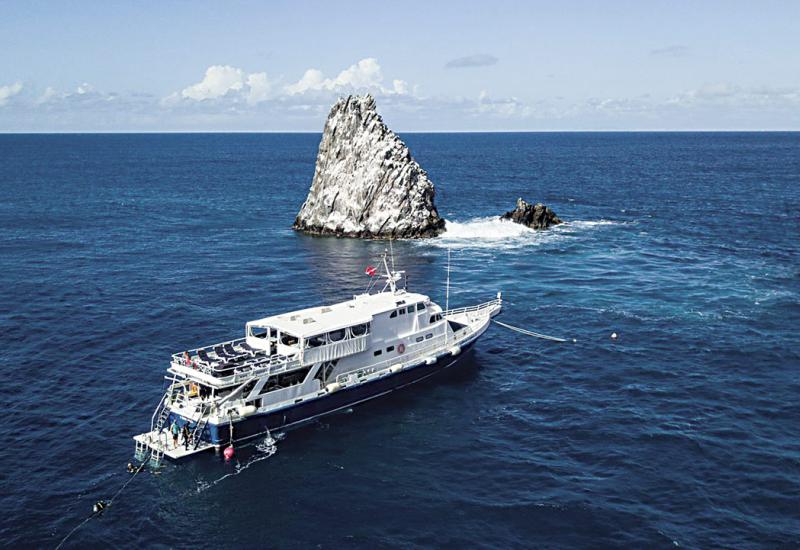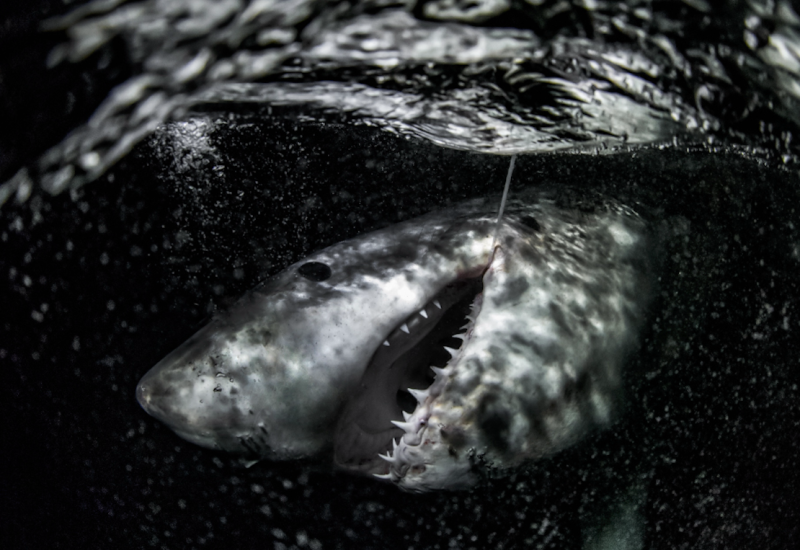The Ocean Festival You Need to Know About
I’ve been coming to Saba and participating in Sea & Learn since 2007,” says Washington, D.C. native Sherry Marts, an avid diver and frequent visitor to the island. “It’s a unique program. There’s nothing else like it as far as I know in the world, much less the Caribbean.”
Marts holds a handful of sargassum in her hands, examining it in the light of the Saban sunset during last year’s Sea & Learn festival. Every October, the Sea & Learn Foundation invites scientists from around the world to the tiny island to participate in a monthlong community engagement and knowledge share. Experts hold a public talk on their research, host at least one citizen-science field project, and talk to local schools and the elderly. It’s citizen science performed on a grand scale.
The talks and field projects focus on environmental challenges faced by the island, such as sargassum blooms, lizard-blood parasites, and coral disease. Then, the interactive projects empower locals and visitors to make a difference with their own two hands and fins.
Related Reading: Deadly Coral Disease Spreads Through Sand, Study Finds
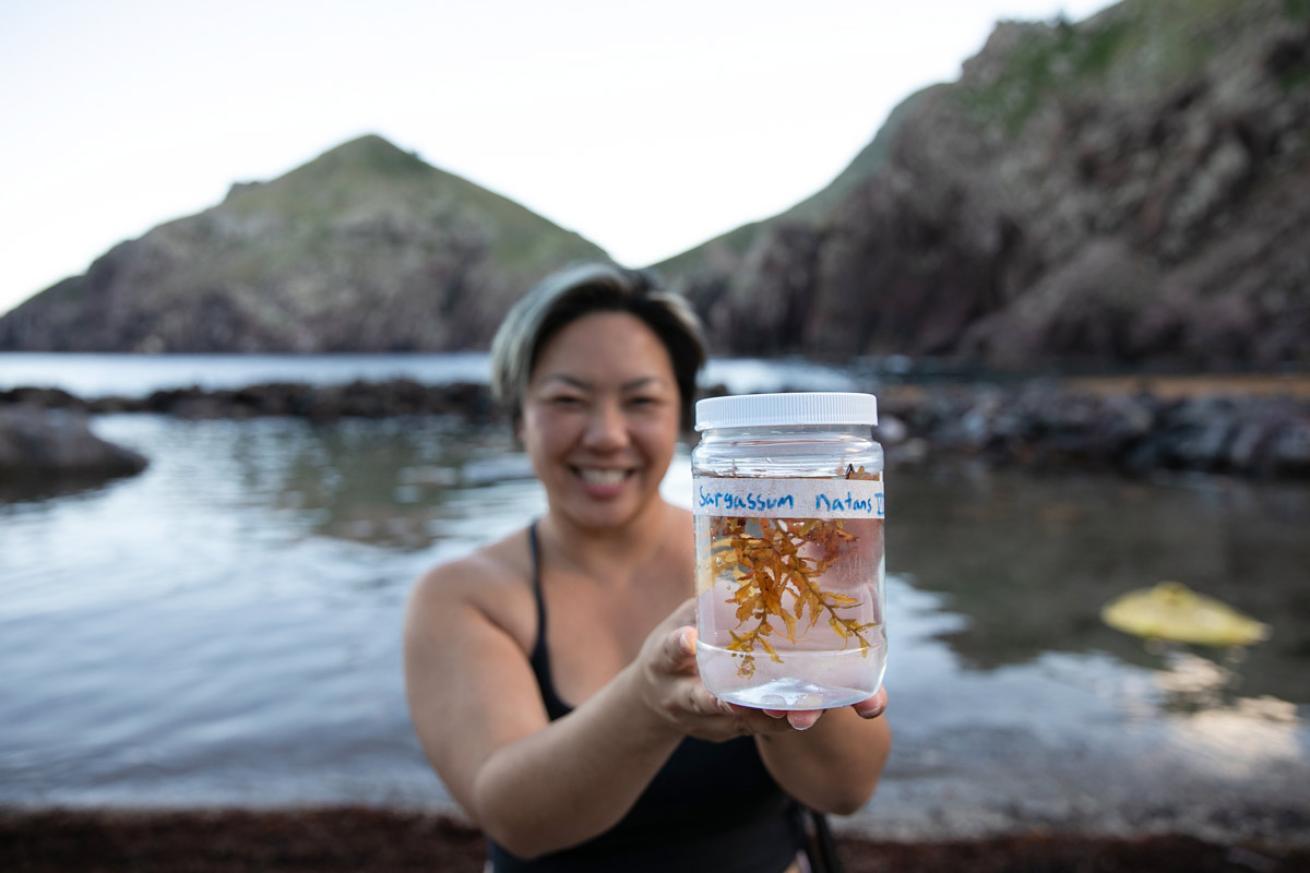
VINH PHAM PHOTOGRAPHYThe author displays a sargassum specimen during a field project
The public talks rotate nightly to different local bars and restaurants during happy hour. That way, locals can join after work and visitors can participate without missing any diving or dining opportunities, says Sea & Learn founder Lynn Costenaro. “It’s really casual and fun,” she says. “It’s not meant to be a classroom.”
“I get to dive during the day and hear talks at night. And the quality of the speakers is always high. Very interesting projects,” Marts says. “It’s a phenomenal way to learn about all aspects of the environment on a very small island.”
Costenaro initially founded the festival to drive tourism to the island during its slowest month, October. She quickly realized the experts could also help Sabans understand more about their precious natural resources and how to better steward them. “Every year we try to expand our reach, getting families, kids and locals out on hikes and dives,” she says. “These are decision-makers, the ones deciding where this island goes, so any awareness we can bring to understanding how valuable and unique this island is, and nature in general, is a big deal.”
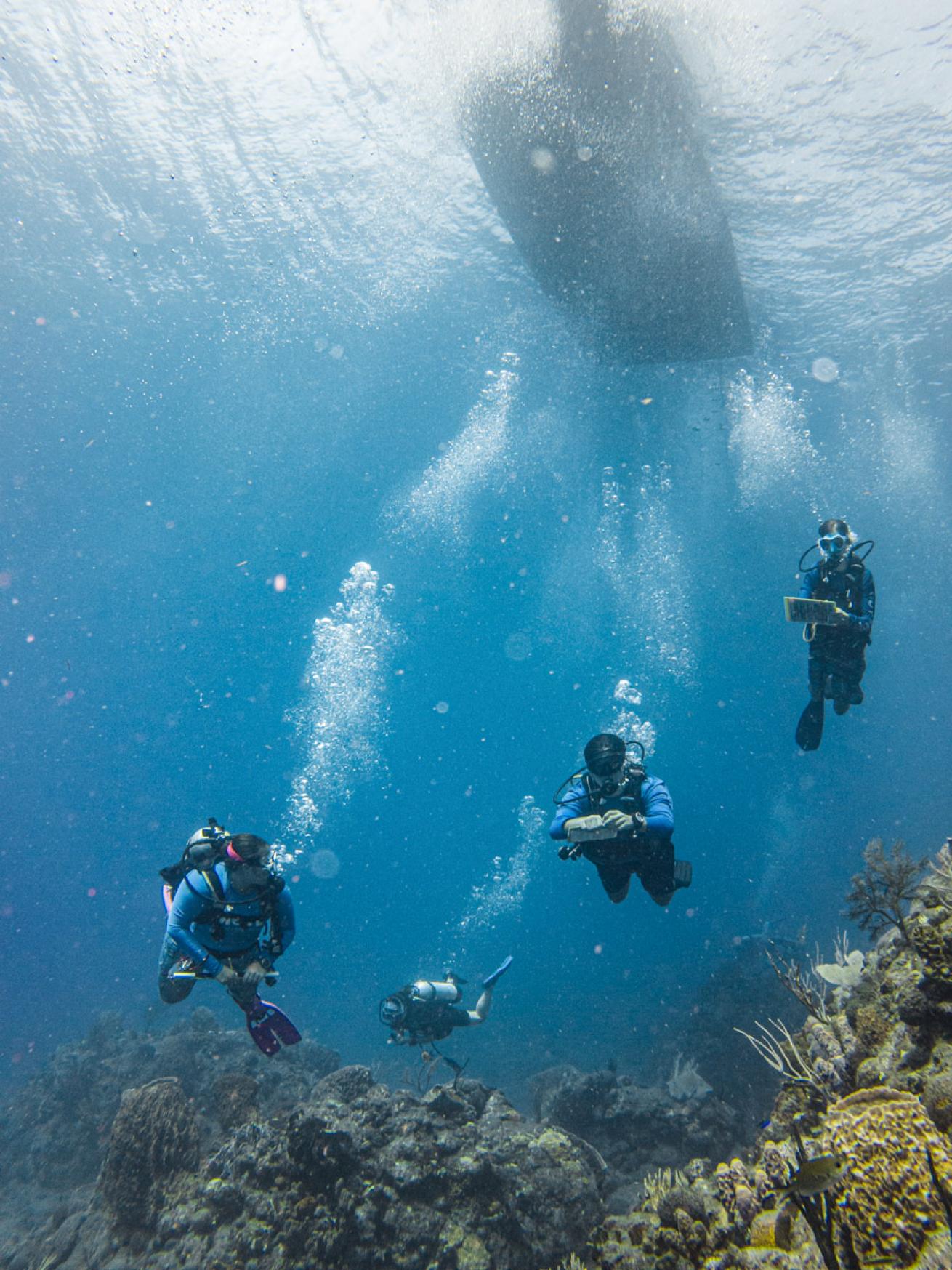
TIFFANY DUONGMote Marine Laboratory coral experts survey local reefs for coral disease with dive visitors and Saban youth.
“Lynn’s got the magic sauce. She made [the festival] a win-win,” says Marts. “The restaurants and bars get the business when they host the events, and the island gets the benefits of the expertise.”
Because of Costenaro’s efforts over the past 20 years, October is now one of Saba’s busiest months. More importantly, local children have had the opportunity to interface with scientists from around the world. Some of the first kids to participate in Sea & Learn are now pursuing careers in marine science, conservation and the coast guard, Costenaro proudly shares.
“When our kids here see young women and Filipino scientists, they realize it’s not just old white men with thick glasses,” Costenaro says. “We’re giving them new role models.”
In 2022, Sea & Learn invited coral disease experts Erinn Muller and Sara Williams from Mote Marine Laboratory & Aquarium in Florida. At Ocean Club restaurant in Saba’s capital and largest town, the Bottom, the two scientists gave a brief overview of stony coral tissue loss disease (SCTLD) in the Florida Keys and the evolution of their treatment methods there. The patio overflowed with locals, regular visitors, marine park managers and dive-shop owners.
“There’s a lot [of SCTLD] on Tent Reef,” said dive instructor Jarno Knijff. “It’s absolutely crazy.” Tent is one of Saba’s premier reefs, and SCTLD has decimated the corals there. Knijff and others wanted to hear from Muller and Williams what, if anything, they can do.
Related Reading: Unprecedented Mass-Bleaching and Significant Coral Mortality in the Florida Keys
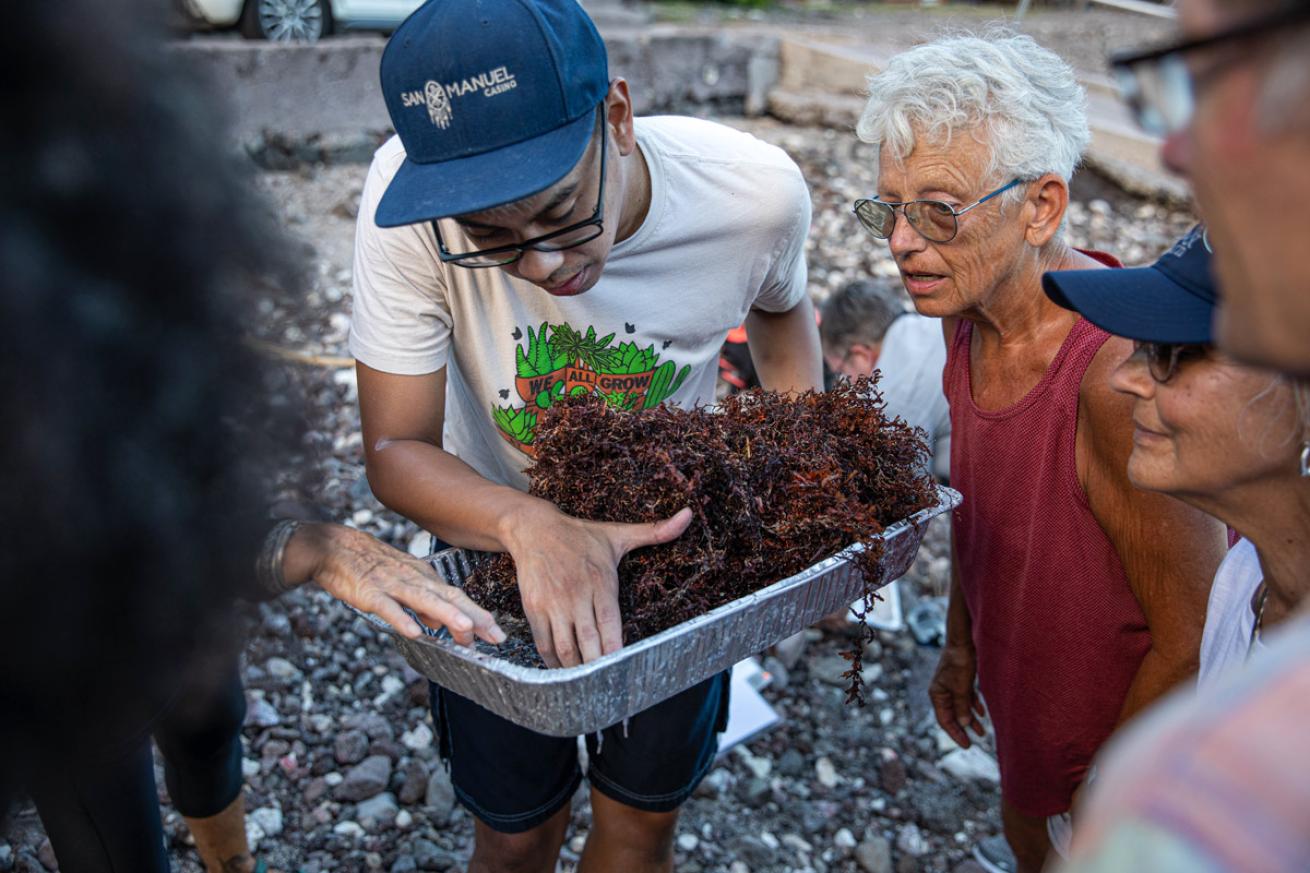
VINH PHAM PHOTOGRAPHYExpert Lowell Iporac talks about the causes of sargassum influxes in Saba.
“Stony coral tissue loss disease is one of the major diseases affecting this region,” Muller replied. “It’s the most devastating coral disease ever recorded.”
But she emphasized that scientists remain hopeful: “Now, we have medicines to apply to coral underwater,” she said. “We treat corals with an antibiotic paste, and 80 percent of the time it stops the disease from spreading.”
Using similar methods, coral-disease practitioners have treated 25,000 corals against SCTLD and saved them from dying, Muller said. Treatments for blackband disease have also been “wildly successful,” which is encouraging for scientists fighting SCTLD.
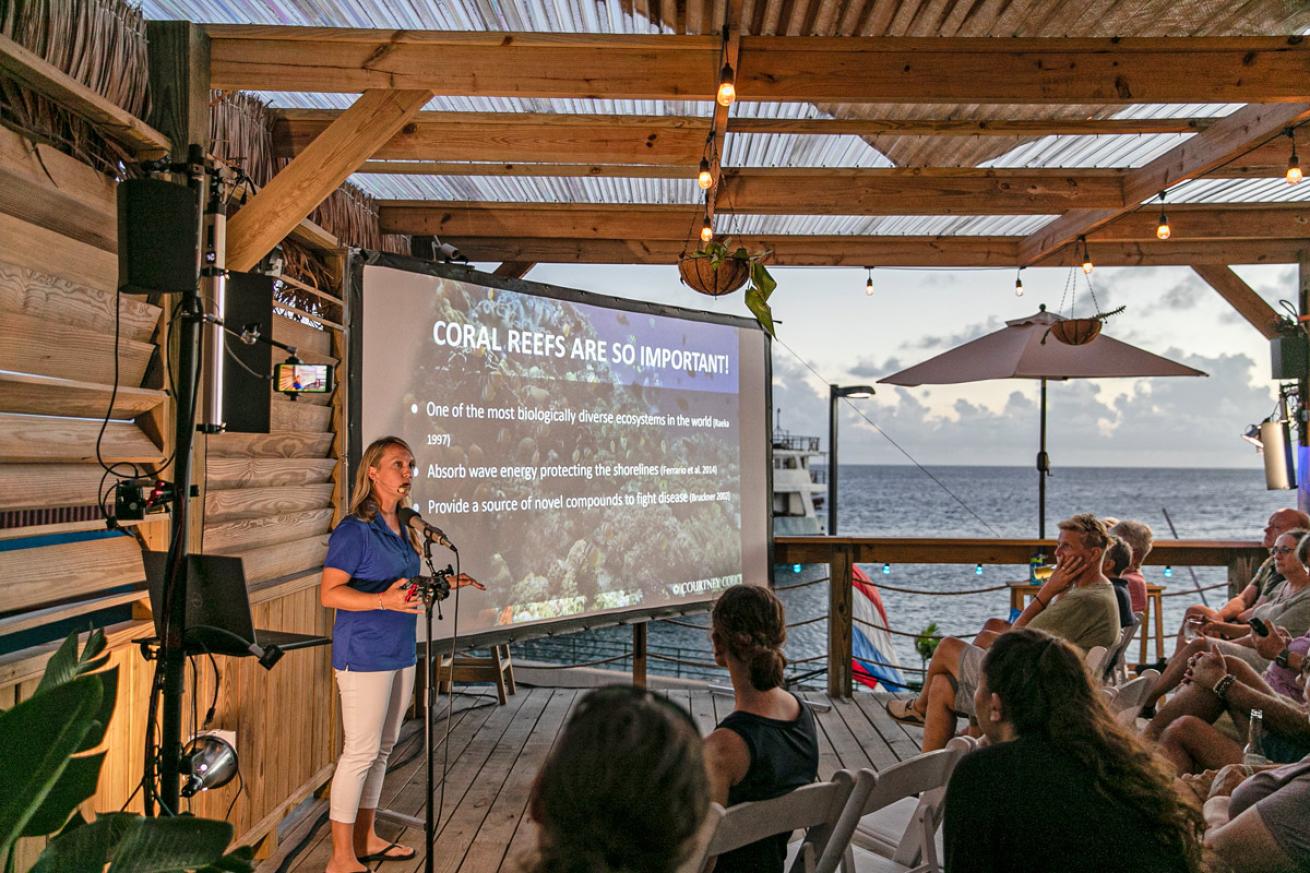
VINH PHAM PHOTOGRAPHYErinn Muller gives a talk on the importance of healthy coral reefs.
Applause filled the room, tentative hope too. Saba National Marine Park representatives asked the important question: “Are these solutions the marine park here can use too?”
Perhaps, with proper assessments, Muller said. The experts then invited divers to join their field project the next day to survey the local reefs—step one in determining a treatment plan. “We get to invite everyone here who’s a diver to see the coral and teach them how to identify what’s healthy and what’s sick, so they see the actual impact this devastating disease is having on their local reef,” said Williams, as she prepped a training demonstration at the restaurant. Using modified syringes, locals and visitors practiced deploying Play-Doh “antibiotic paste” onto models of diseased brain corals.
Related Reading: An Unforgettable Dive: the Reef that Transformed Me
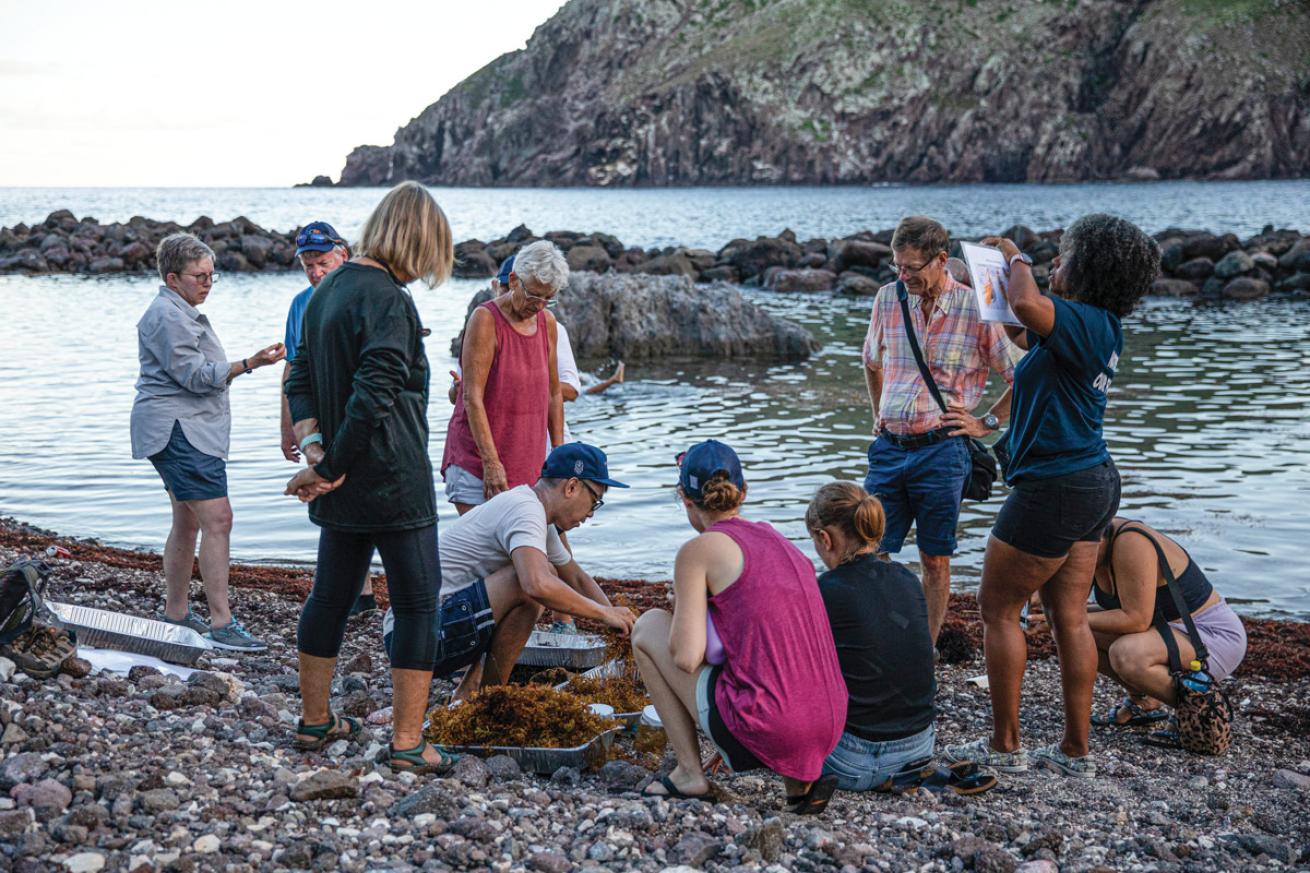
VINH PHAM PHOTOGRAPHYA group collects sargassum for study.
“This kind of community-based knowledge share is so important for science,” Williams says. “The purpose of science is to bring back what we find to everyone else who’s not a scientist.”
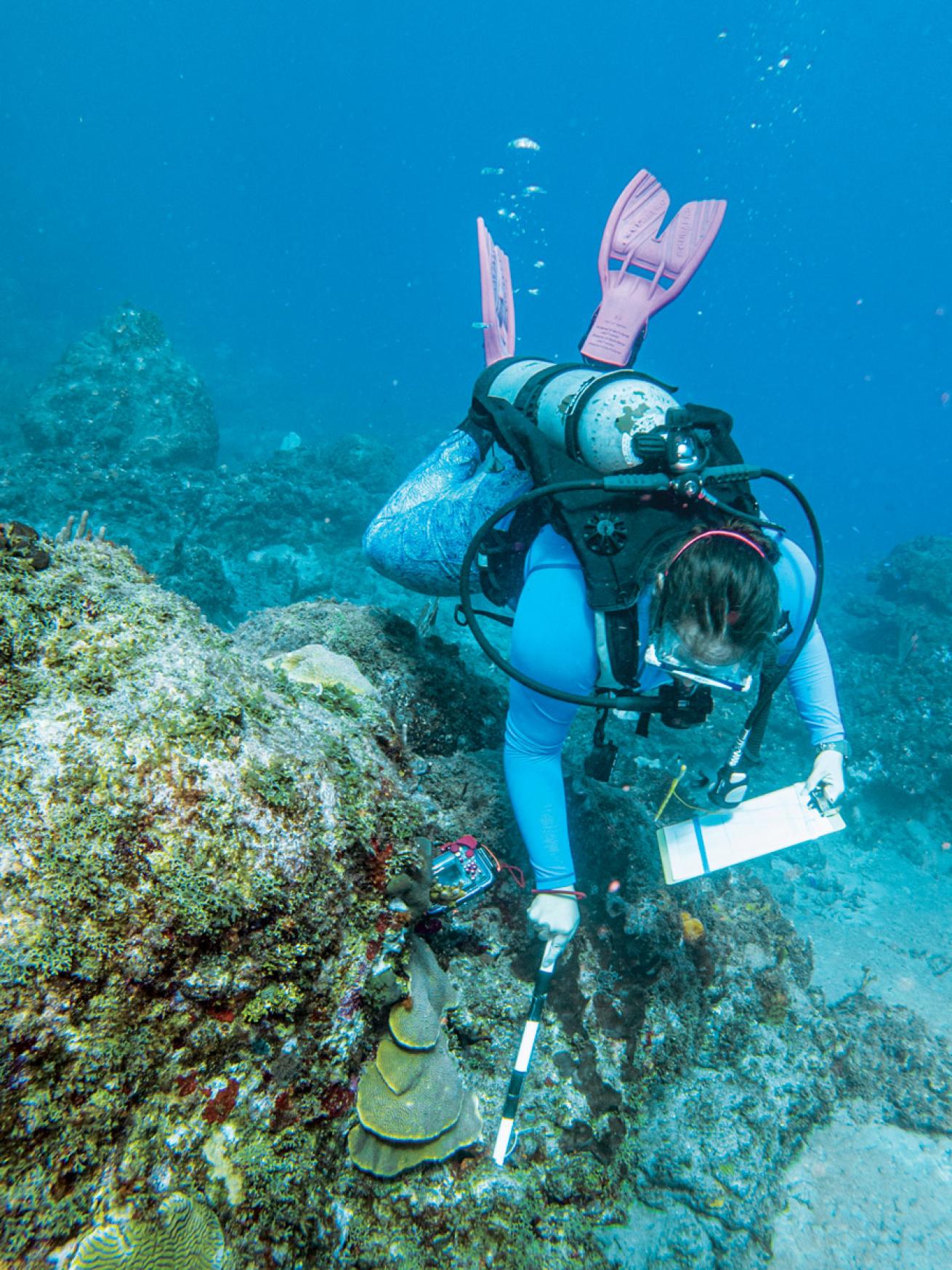
TIFFANY DUONGSara Williams measures the size of an endangered coral.
Knijff and his students joined Muller and Williams on their field dives. Over the summer, he trained three local students — with expenses completely covered by the foundation—up through their PADI Advanced Open Water dive certifications to take part in these coral surveys with the Mote experts. “The idea of Sea & Learn is to make these boys the new director of the Saba Conservation Fund or a new marine park ranger,” Knijff says. “To get them excited to protect Saba and maybe find a new career, or a new hobby. It’s a unique opportunity.”
While some of their classmates don’t yet swim, these three learned to snorkel, dive and conduct scientific research underwater. Now, with Muller and Williams, they added coral-disease surveying to their repertoire of underwater skills.
“These kinds of public programs about science that give people hands-on experience with how this kind of science gets done are crucial to the future of this planet,” Marts says.
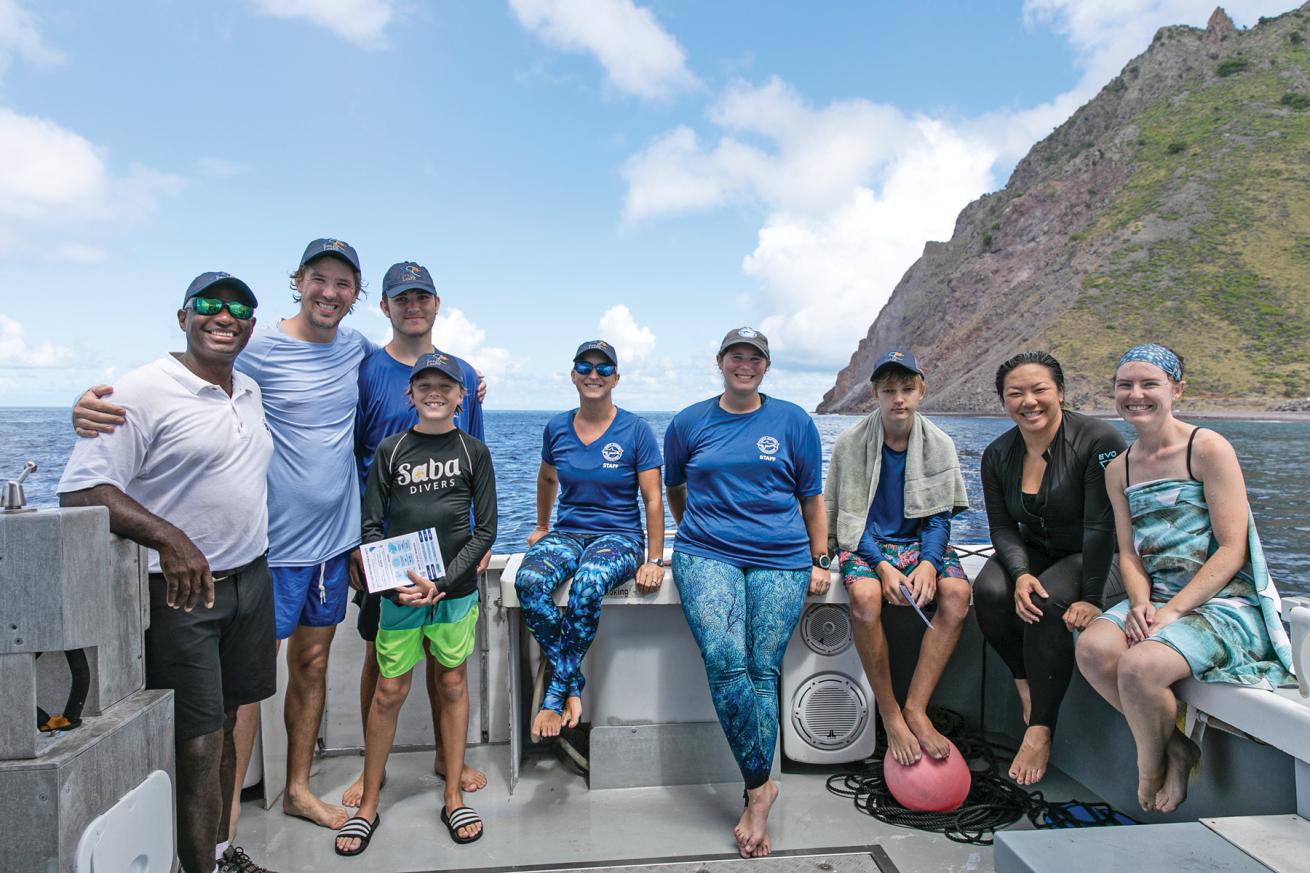
VINH PHAM PHOTOGRAPHYJarno Knijff and his students join coral disease experts Muller and Williams on a coral survey.
Sea & Learn 2023
Saba will once again host Sea & Learn events throughout the month of October. This year marks the festival’s 20th anniversary. More at seaandlearn.org.

